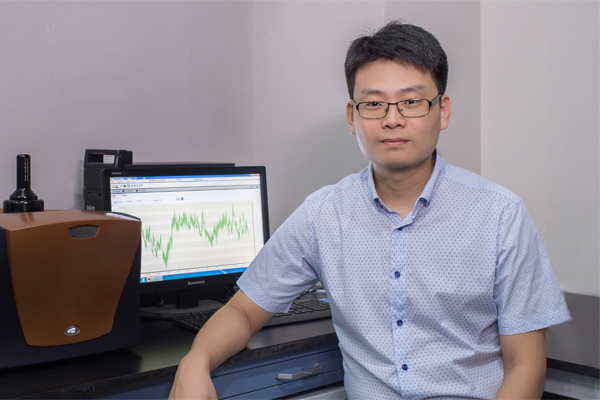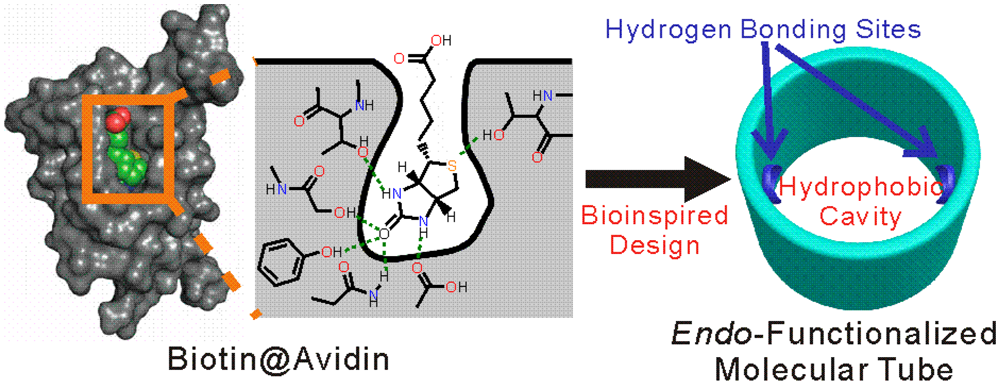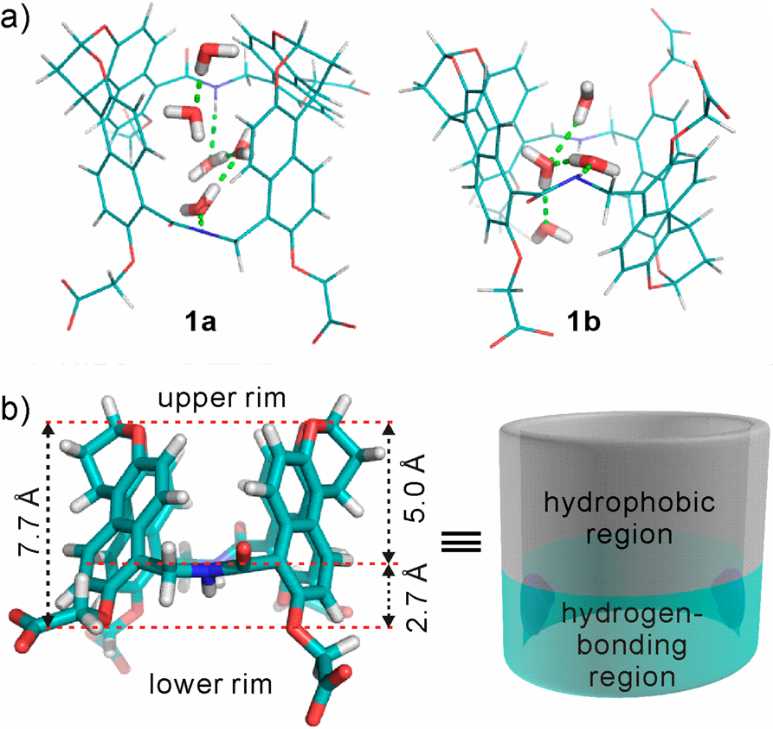Southern University of Science and Technology (SUSTech) associate professor, Jiang Wei from the Department of Chemistry, had his research results published in JACS (J. Am. Chem. Soc. 2018, DOI: 10.1021/jacs.8b09157). Their research provided a systematic solution to scientific problems in the field of supramolecular chemistry, “Selective recognition of hydrophilic molecules in water.”

During the last half a century, great achievements have been made in molecular recognition in parallel with the invention of numerous synthetic receptors. However, the selective recognition of hydrophilic molecules in water remains a generally accepted challenge in supramolecular chemistry but is commonplace in nature. In an earlier Communication [Huang et al. J. Am. Chem. Soc. 2016, 138, 14550], the research group reported a pair of endo-functionalized molecular tubes that surprisingly prefer highly hydrophilic molecules over hydrophobic molecules of a similar size and shape. The hydrophobic effect and hydrogen bonding were proposed to be responsible, but their exact roles were not fully elucidated.

In this article, Jiang Wei’s group presents a thorough study on the binding behavior of these molecular tubes toward 44 hydrophilic molecules in water. The principal component analysis reveals that the binding strength is weakly correlated to the hydrophobicity, volume, surface area, and dipole moment of guests. Furthermore, molecular dynamics simulations show the hydrophobic effect through releasing the poorly hydrogen-bonded cavity water contributes to the binding of all the hydrophilic molecules, while hydrogen bonding differentiates these molecules and is thus the key to achieve a high selectivity toward certain hydrophilic molecules over other molecules with a similar size and shape. Therefore, a good guest for these molecular tubes should meet the following criteria: the hydrogen-bonding sites should be complementary, and the molecular volume should be large enough to expel all the cavity water but not too large to cause steric hindrance. This rule of thumb may also be used to design a selective receptor for certain hydrophilic molecules. Following these guidelines, a “best-fit” guest was found for the syn-configured molecular tube with a binding constant as high as 106 M–1.

The inner modified molecular tube has a cavity characteristic similar to a biological receptor. This research not only helps to understand complex biomolecular recognition phenomena but also provides theoretical guidance for designing receptors for other hydrophilic molecules. Such modified molecular tubes are different from other macrocyclic hosts in terms of the binding mechanism and guest scope and are a new class of macrocyclic hosts. In addition, many environmental contaminants, drug molecules, and biomarkers of disease are polar molecules or contain polar groups. The research has broad application prospects in the fields of detection and removal of environmental pollutants, disease diagnosis, drug solubilization and targeted delivery, catalysis, molecular machines, and smart materials.
The experimental work of this research was mainly completed by 2017 SUSTech doctoral student Yao Huan, in conjunction with Harbin Institute of Technology (HIT). Yao Huan was a master’s degree student jointly trained by our school and Beijing Institute of Technology. After graduation, she continued to study for a doctoral degree. She has already published the first author’s papers in the journals of JACS and Chem. Commun. (Nature Index Journals) with SUSTech as the first communication unit. Postdoctoral researcher Ke Hua cultivated and analyzed all the single crystal structures and has subsequently been hired as an associate professor by Pingxiang College. University of Manitoba doctoral student Zhang Xiaobin made theoretical calculations. Li Mingshuang, a 2018 SUSTech-HIT graduate student, and Dr. Yang Liupan, an assistant professor of research at SUSTech Academy for Advanced Interdisciplinary Studies, also participated in the research.
SUSTech is the first communication unit, and Jiang Wei is the sole corresponding author. The research was supported by the National Natural Science Foundation of China, the “Outstanding Youth Science Fund,” the Shenzhen Science and Technology Commission Project and the Shenzhen Nobel Prize Scientist Laboratory Project.
Link to the paper: https://pubs.acs.org/doi/10.1021/jacs.8b09157
Proofread ByXia Yingying
Photo By